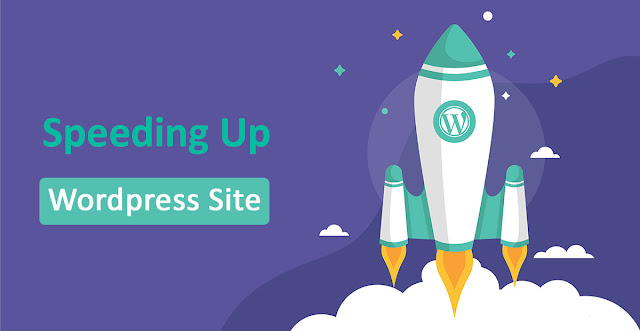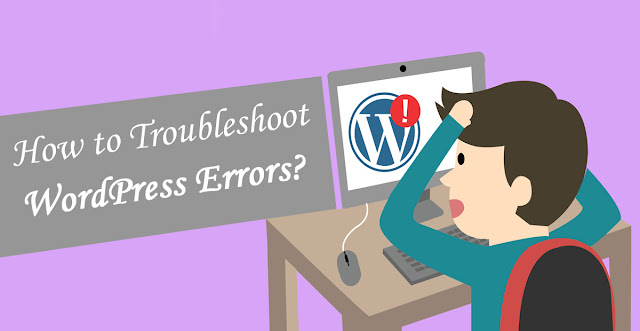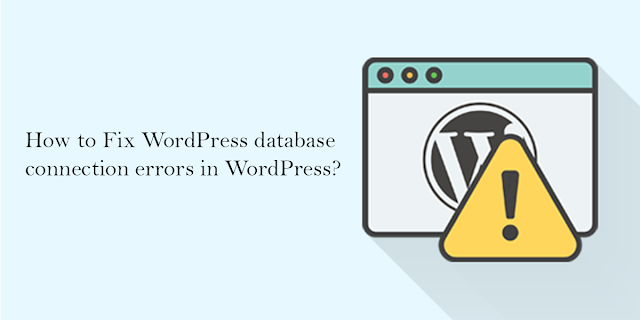How to Speed Up WordPress Website?
A Guide to Speed up WordPress:
When a person lands on your site for the first
time, you only have a few seconds to capture their attention to convince them
to hang around.
Get ready to lose sleep at night: according to a
report by the Microsoft Bing search team, a 2 seconds longer delay in page
responsiveness reduced user satisfaction by 3.8%, increased lost revenue per
user by 4.3%, and reduced clicks by 4.3%.
If your site takes too long to load, most people
are gone, lost before you even had a chance.
Not only that, but Google now includes site
speed in its ranking algorithm. That means that your site’s speed effects SEO,
so if your site is slow, you’re now losing visitors from impatience and reduced
rankings in search engines. Yikes!
1. Choose a better web hosting provider
The major factor that influences the speed of a
website is the hosting of your WordPress Website. It might seem like a
good idea to host your new website on a shared hosting provider that offers
“unlimited” bandwidth, space, emails, domains and more. However, the point that
we usually miss out on regarding this offer is that shared hosting environments
fail to deliver good loading times on peak traffic hours, and most fail to
provide 99 percent uptime in any given month.
Shared hosting tends to deliver a poorer
performance because you are sharing the same server space with countless other
websites, and there is no telling how much resources others are using. Plus,
you don’t know exactly how well the servers are optimized.
Thankfully, the web-hosting industry has
advanced with technology, and the prices of cloud hosting providers have
decreased with the passage of time. In the present times, you can buy dedicated
cloud servers from SiteGround, DigitalOcean, Amazon Web Services, and even
Google Compute Engine at a nominal price. However, setting those servers up can
be a daunting task as you are required to set servers up from scratch. There
are web hosting providers like Cloudways (where I work) who make the task of
setting up optimized cloud servers as easy as click and launch. You can read
more about the process here: how to set up WordPress
Website through Cloudways.
2. Use a lightweight WordPress theme/framework
WordPress themes with a lot of dynamic elements,
sliders, widgets, social icons, and many shinier elements are immensely
appealing to the eye. But remember this: if they have too many elements and
higher page sizes, then they will definitely cause your web server to take a
thumping.
The best option here is to use lightweight
themes. One solution is to go for one of the default WordPress themes (WordPress
Theme Development). Another is to try out something like Neve, built by
the same guys behind CodeinWP.
Alternatively, for a feature-rich website, you
can also opt for a theme that uses a good framework like Bootstrap or
Foundation.
3. Reduce image sizes
Images are the major contributors to the size
increment of a given webpage. The trick is to reduce the size of the images
without compromising on the quality.
If you manually optimize the images using Chrome
PageSpeed Insights extension or Photoshop or any other tools, the process will
take a long time. Fortunately, there are plugins available for just about
everything you can think of, including image optimization. The ones worth
mentioning are:
- Optimal
- WP Smush
- EWWW Image Optimizer
Using any of the above-mentioned plugins on your
WordPress site will drastically reduce image sizes, thus improving the speed of
your website.
4. Minify JS and CSS files
If you run your website through the Google
PageSpeed Insights tool, you will probably be notified about minimizing the
size of your CSS and JS files. What this means is that by reducing the number
of CSS and JS calls and the size of those files, you can improve the site
loading speed.
Also, if you know your way around WordPress
themes, you can study the guides provided by Google and do some manual fixing.
If not, then there are plugins that will help you achieve this goal; the most
popular being the Autoptimize that can help in optimizing CSS, JS and even HTML
of your WordPress website.
5. Use advanced caching mechanisms with a
caching plugin
WordPress caching plugins (e.g. W3 Total Cache)
has been there for a long time, making the complex tasks of adding caching
rules to your website elements easier. Combining such plug-ins with advanced
caching mechanisms like Varnish could help you better the loading speed of your
website and ultimately speed up WordPress considerably.
6. Use a CDN
The people who visit your website belong to
various locations in the world, and needless to say, the site-loading speed
will differ if the visitors are located far away from where your site is
hosted. There are many CDN (Content Delivery Networks) that help in keeping the
site-loading speed to a minimum for visitors from various countries. A CDN
keeps a copy of your website in various data centers located in different
places. The primary function of a CDN is to serve the webpage to a visitor from
the nearest possible location. Cloudflare and MaxCDN are among the most popular
CDN services.
8. Cleanup WordPress database
Deleting unwanted data from your database will
keep its size to a minimum and also helps in reducing the size of your backups.
It is also necessary to delete spam comments, fake users, old drafts of your
content and maybe even unwanted plugins as well as themes. All of this will
reduce the size of your databases and web files, and thus speed up WordPress –
your WordPress
eCommerce Website.
9. Deactivate or uninstall plugins
Keeping unwanted plugins on your WordPress websites will add a
tremendous amount of junk to your web files. Moreover, it will also increase
the size of your backup and put an overwhelming amount of load on your server
resources while backup files are being generated. It is better to get rid of
the plugins that you don’t use and also look for alternate methods to use
third-party services for automating or scheduling tasks (like sharing of your
latest posts to social media).
IFTTT or Zapier are two web services that help
in automating such tasks and reduce the burden on your website and server
resources.
10. Keep external scripts to a minimum
The usage of external scripts on your web pages
adds a big chunk of data to your total loading time. Thus, it is best to use a
low number of scripts, including only the essentials such as tracking tools
(like Google Analytics) or commenting systems (like Disqus).
11. Disable pingbacks and trackbacks
Pingbacks and trackbacks are two core WordPress
components that alert you whenever your blog or page receives a link. It might
sound useful, but you also have things such as Google Webmaster Tools and other
services to check the links of your website.
Keeping pingbacks and trackbacks on can also put
an undesirable amount of strain on your server resources. This is so because
whenever anyone tries to link up to your site, it generates requests from
WordPress back and forth. This functionality is also widely abused when
targeting a website with DDoS attacks.
You can turn it all off in WP-Admin → Settings →
Discussion. Just deselect “Allow link notifications from other blogs (pingbacks
and trackbacks).” This will help you speed up WordPress some more.
Conclusion
The biggest advantage of lowering your website’s
loading time is that it will help tremendously in improving the experience of
your visitors. The case remains the same whether they are using mobile devices
or PCs. Furthermore, it will also improve your rankings in the SERPs. After
all, reduced bandwidth usage of your hosting and faster site-loading speed on
the client-side will only benefit you both in the short as well as in the long
run.
You can always find your way to a WordPress Expert or hire a WordPress
Development Company to help you speed up your WordPress Website &
boost your online business.
Call Us: 888-606-1808
to get free WordPress Assistance.




Comments
Post a Comment